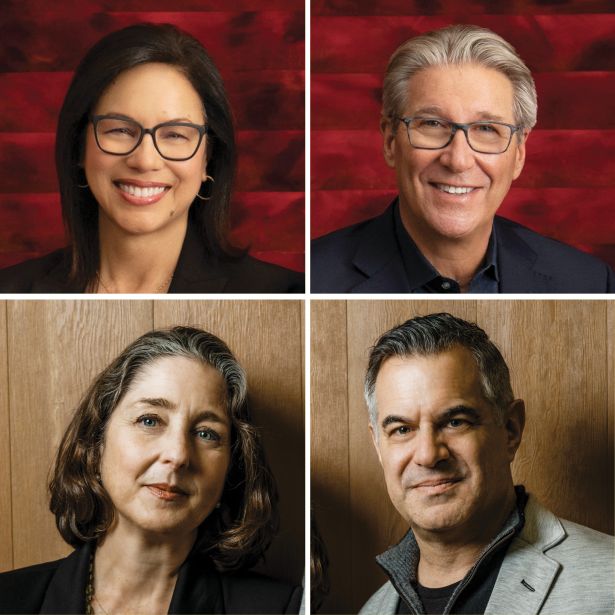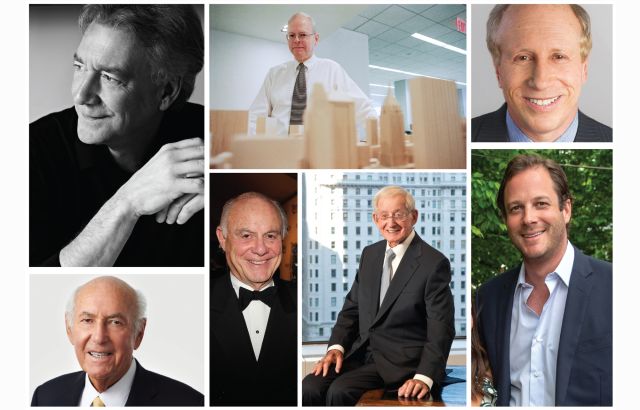
Diane Hoskins (clockwise from top left), Andy Cohen, Jordan Goldstein and Elizabeth Brink.
Andy Cohen, Diane Hoskins, Elizabeth Brink and Jordan Goldstein
Co-global chair; co-global chair; co-CEO; co-CEO at Gensler
Last year's rank: 96

About a year ago, Elizabeth Brink and Jordan Goldstein were named co-CEOs at Gensler, one of the world’s largest and greatest architect firms.
It has not been a dull tenure.
Yes, we can talk about how the firm had its hands in everything from adaptive reuse (like the Pfizer headquarters conversion happening in Midtown), or trophy office development (like Amazon’s HQ2 in Virginia), or innovation hubs (like AltaSea at the Port of Los Angeles), or airports (John Glenn in Columbus, Ohio), or stadiums (the Rose Bowl in Pasadena) — and that’s just in the U.S.!
But one thing that distinguishes Gensler from some of its peers is the ability to look around corners.
Currently, we’re at a “point of inflection in the industry, where the rise of artificial intelligence — also pre-fabrication, robotics, all that stuff — is going to really change this profession,” Goldstein told CO late last year while on a trip to Gensler’s New York office from his home in Washington, D.C. (The firm has 57 offices worldwide and 6,300 employees.)
Gensler was determined to get ahead of this trend. “Ten years ago, we hired a head of technology [from] Disney Imagineering,” Goldstein said. “He immediately started to build a global digital technology team that would be working with our designers.”
Gensler, chaired by Andy Cohen and Diane Hoskins, built gFloorz to examine floor plates; gDiffusion, its interior design software; and gBlox which not only can start the design process but also immediately knows the bane of every developer’s existence: “It will know where it is in Midtown Manhattan,” Goldstein said. “It will know the zoning and code-related constraints, and it will say, ‘OK, well, actually, you’re too high. Here you have setbacks…’ ”
Of course, Gensler is not a tech company, and it doesn’t limit itself to simply American projects. Beyond the U.S. it is making its presence felt globally.
“We’ve been talking a lot about incredible opportunities out in India,” said Brink while on a recent trip to New York from Los Angeles. In India, Gensler is designing private universities. “Right now, there’s a lot of excitement around building there and other parts of Asia.”
We can also mention the senior living facilities Gensler’s designing in China, or the data centers in the U.K., or the soccer stadium in Cairo, and so much more — but we would be here awhile.








